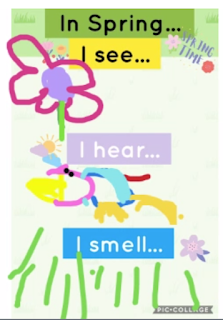The time is now
In addition to content that state and local municipalities deem "essential learning", it is fundamental that teachers guide students in developing universal skills that help them approach the learning in which they engage. Equipping students with these universal skills gives them “the ability to take on the responsibility to make informed, intelligent choices and decisions.” Although this idea of John Dewey was written over 100 years ago (ironically around the time of another pandemic), it continues to be just as relevant today.Typically, I have thought about helping students develop these necessary skills so that someday far into the future, when they’ll need them, they’ll be ready to put these skills into practice. However, it is becoming increasingly more obvious everyday that we experience distance learning that the time that students need these skills is now.
The PYP ATLs
The International Bacchaeleature (IB) has identified five distinct categories of associated skills that help students become self-regulated learners. The IB refers to these collective skills as the Approaches to Learning. The Primary Years Programme (PYP) has identified skills and sub-skills under each of the five categorical umbrellas. The teachers with whom I work defined each of these skills in student-friendly language (to read more about how we did that, check out UPDATED* PYP Placemat).ATL in the time of distance learning
As teachers, it is our responsibility to help students develop these lifelong learning skills not so that they can be successful adults someday, but so that they can be successful now. As students engage in distance learning, effective teachers ask:
Many of the ATL skills can be newly interpreted in the current context. Below are just a few examples of the ATL skills reinterpreted in this time of distance learning.
THINKING
Forming decisions: As I learn from home, how can I stay flexible and open-minded when making a choice or learning something new?
RESEARCH
Ethical use of media/information: How can I continue to be responsible, respectful and safe in a digital classroom?
COMMUNICATION
Speaking & Listening: During virtual video chats (like Google Meet and Zoom), how can I speak clearly to share and explain my ideas in many ways and listen respectfully and responsibly to others so I can understand?
SOCIAL
Interpersonal Relationships: How can I get along with and care for others in my home as we learn? How can I get along with my family members who are now my teachers? How can I get along with my siblings with whom I might be sharing a device?
SELF-MANAGEMENT
Organization and Perseverance: What’s my plan to complete all these challenging online tasks that I have to do today without giving up?
How can teachers support students in actively engaging in their own learning?
The PYP advocates for teachers to implicitly and explicitly help students develop these Approaches to Learning so that they can actively engage in their own distance learning.
Developing ATL skills implicitly
Teachers can implicitly embed ATL learning in the culture of the distance learning classroom. As they engage with learners in online platforms and synchronous and asynchronous learning, they can model the ATLs and use the language of these skills. They can highlight the use of ATL by the children in the class and characters in storybooks.Developing ATL skills explicitly
Teachers can also explicitly teach the Approaches to Learning through inquiry by creating specific ATL goals with students and giving them the opportunity to reflect on their own progress towards these goals.With personalized, actionable feedback (a highly effective strategy according to Hattie's research), teachers can support students’ development of these skills one-on-one. In the shift to distance learning, teachers have the opportunity to think and rethink the ways in which they provide feedback to learners. Digital tools that educators across the globe are now utilizing offer a variety of ways to give feedback that enhances the way feedback is given and received.
Further, successful teachers monitor their students’ development of these skills and when they notice particular skills that are lacking, design specific learning experiences that will help their students fill the gap (like these diverse challenges from Parita Parekh and the team at Toddle).
A call to action
Although distance learning has some limitations and the way we “do school’ looks different, the philosophies at the core of our teaching and learning - like equipping students with universal skills that help them become self-regulated learners -remain the same. How are you implicitly and explicitly helping your students develop the Approaches to Distance Learning so that they become successful, self-regulated learners?







